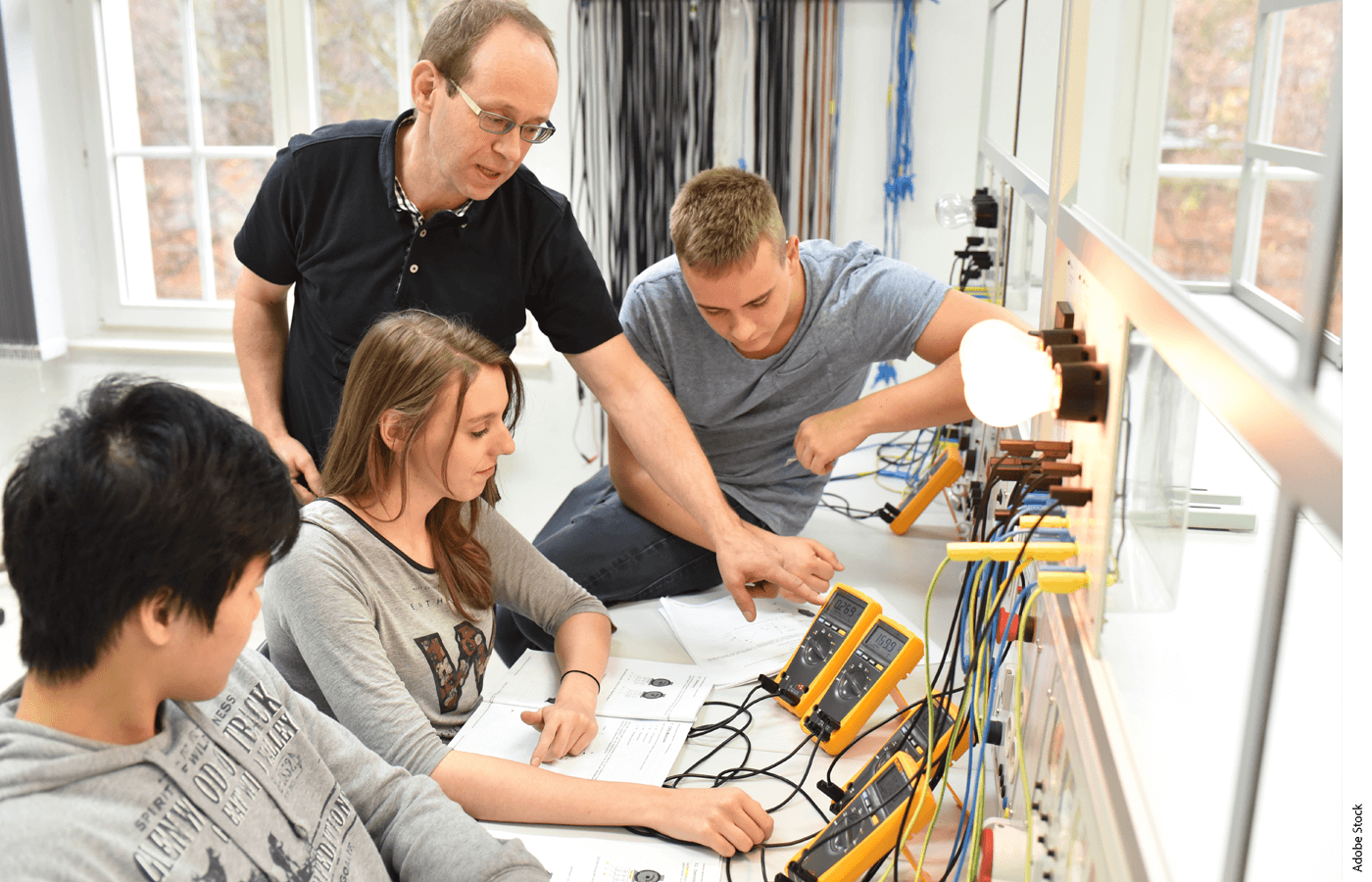
A recent article in the Boston Globe dug into a controversy that is dogging Massachusetts’s highly-regarded system of regional career and technical education (CTE) high schools. What makes the schools so unique is that they are highly selective. Only applicants with relatively high test scores and clean discipline records are admitted, but, as the article explains, that leaves out a lot of kids who might benefit from the kinds of programs that they offer.
As far back as he can remember, Aaron Perkins knew he wanted to work with his hands. Childhood photos foreshadowed his ambitions: A tow-headed toddler wielding a toy chainsaw in one shot, the same tyke wearing floppy workman’s gloves in another. By age four, he’s on his back under a jacked-up toy tractor, absorbed in imaginary play.
It seemed inevitable, then, that Perkins—the great-grandson, grandson, and son of tradespeople—would attend his local vocational school when he reached the ninth grade.
But that never happened. He couldn’t get in.
The article highlights a dilemma that might be unusual in the CTE world but is common in public education writ large: when is it appropriate to limit admission—into a school, program, class, or curricular strand—to students with high test scores or similar attributes? This question arises most often in the context of gifted and talented and advanced education, especially with respect to the country’s most famous and academically selective public schools, such as Stuyvesant and Bronx Science in New York and Thomas Jefferson in Northern Virginia.
Some people feel strongly that public schools should never practice selective enrollment. After all, one of the principles of public education is supposed to be that schools are open to everyone.
Of course, that’s never actually been the case, even for “regular,” open-enrollment, and “neighborhood” schools, which are typically reserved for families living within designated attendance boundaries. America’s leafy suburbs, in particular, contain many of what we at the Thomas B. Fordham Institute once called “America’s private public schools.”
And yet, an absolutist position against selective-enrollment public schools carries its own problems. Not only would it lead to the demise of many excellent institutions that have long served their communities—and the nation—well, it would also mean eliminating opportunities for kids with niche needs.
Take the example of CTE centers. While the high standards of the Massachusetts schools are unusual, it’s common for CTE programs to screen out kids with disciplinary problems. If schools are going to take teens and teach them how to weld or offer apprenticeships in which adolescents are sent into corporate offices, they want to make sure that those young people have the maturity to handle the level of responsibility and function satisfactorily in the new setting.
And there’s little doubt that some educational benefit follows from grouping students of similar high achievement together, so they can all be challenged in ways they couldn’t be if their teachers also had to instruct lower-achieving peers at the same time. We don’t bat an eye, for example, when states create selective enrollment public universities. Indeed, flagship state universities—think University of Virginia, Ohio State University, or University of California, Berkeley—are typically celebrated, and for good reason. But they don’t pretend to serve everyone, even though they are “public.”
Yet obvious problems arise when programs like the Massachusetts CTE schools exclude kids who would likely succeed and benefit from them, which undoubtedly means thousands who today don’t “qualify.” So here are a few rules we might apply to make sure that selectivity and accessibility are balanced to the greatest extent possible.
- When it is clear that there is an excess supply of qualified applicants, schools and programs that have limited slots should be replicated or expanded so that artificially-created scarcity is not the reason that well-qualified applicants are excluded.
- The selection criteria should be tied to the actual skills, knowledge, and attributes needed for success in a given school or program. Measures of high academic achievement, like test scores, make sense for exam schools like Stuyvesant and Boston Latin, but humbler targets might work for CTE schools, such as being on grade level in reading and math. There, behavioral standards may matter more.
- Selective enrollment schools and programs can only be justified if the services they offer would not be possible in a nonselective, heterogeneous setting. For example, advanced academic programs should go faster or deeper than what’s doable in a typical classroom. It’s not enough to just group all of the high achievers together and then have them tackle the same curriculum as everyone else.
- Selective schools and programs should accept all well-qualifiedstudents by lottery. Admissions officers should set a high but reasonable bar for entry—whether based on test scores, behavioral records, performance in an interview, student essays, whatever. And everyone who clears that bar should be entered into a lottery, with winners chosen at random. A similar system has been suggested for America’s most selective universities. Rather than pretend that there’s a meaningful difference between kids with an SAT score of 1550 versus 1525, or a GPA of 3.9 versus 3.8, just put everyone who scores above a certain level and demonstrates a certain amount of well-roundedness into a hat and pick the winners by chance.
Back in Massachusetts, building more terrific CTE programs clearly must be part of the solution. Some could continue to serve the relatively-high-achieving students that they do now while others aim for students with more average academic abilities but a yearning to launch a career. After all, it’s possible to believe that not every school has to serve every type of student, while also making sure that selectivity is not just another excuse for inequality.
Michael J. Petrilli is president of the Thomas B. Fordham Institute, visiting fellow at Stanford University’s Hoover Institution, and an executive editor of Education Next.
This post was first published by Forbes.


